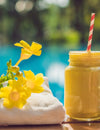

Butter is, without question, one of the most popular culinary ingredients ever created. People often find themselves asking where to purchase compound butters, as they are notoriously difficult to come by. When you find a good quality artisan butter, you will instantly know it, as the taste, texture, and overall quality will be leaps and bounds ahead of any other butter (or spread) you’ve tasted before. Butter is an ingredient which many of us take for granted, and it is actually one of the least understood and most fascinating culinary ingredients in the entire world. Whether you want to find out where to purchase compound butters, how butter is made, or anything else about this humble yet delicious ingredient, here’s a look at a few interesting facts about butter that you may not have previously been aware of.
The first Creameries in the US – In the US, the first creameries, or butter factories, were actually first opened around 1860. They began their lives in the New York area. Soon after, the butter business began to thrive as by the year 1879, around 29 million pounds of butter were being created annually! Three decades later, these numbers were at 627 million pounds, and a decade after that, annual numbers came to around 1 billion pounds of butter. Butter production actually peaked in the year 1940, where numbers rose to an astonishing 2.2 billion pounds! To say that the world had fallen in love with butter would be putting things lightly.
Not as Much Fat as You May Think – One of the main reasons why people tend to recoil in horror when you offer them butter if they are dieting or watching their figures, is due to the fact that people believe butter is rich in fat. While butter does contain fats, which by the way, is healthy, 2 tablespoons of butter will provide you with just 8 grams of fat, which is roughly 11% of your recommended daily intake.
It Was All Yellow – Generally, when we think of natural, organic, good quality butter, we think of naturally yellow butter, which comes from cream with a natural yellow color. If the yellow color is indeed natural, the yellowness of the butter will depend on the diet of the cow. You see, if a cow has consumed a lot of carotene from grass, the milk it produces will be more yellow, and will be healthier as carotene is a potent vitamin/antioxidant. However, some less than honest butter manufacturers actually add artificial dyes to their butters, to make them appear yellow and subsequently healthier. Just because a butter is yellow, does not mean it is healthy, so try to find out the ingredients before you commit yourself to making a purchase based on the color of the butter.
Yellow Coloring is Nothing New – If you thought that adding artificial yellow colors to butter to make it appear more yellow than it actually is, was a clever marketing ploy designed to target health and fitness enthusiasts, you would be wrong. Butter has been artificially colored yellow for many, many centuries. In actual fact, during the middle ages, butter producers used to color the mixture yellow with marigold flower petals to help brighten up the mixture and to make it appear even more attractive.
How Much Milk?! – To produce just one pound of butter, it requires a whopping 21 pounds of whole milk. Now that is a lot of milk, but as we’re sure you’ll agree, it is certainly worth it.
Whipped Butter – Whipped butter, which is hugely popular and hugely delicious is made when air is whipped directly into the butter, to give it a light and fluffy texture.
The Ancient Romans Were Fans – As mentioned, butter has been made for thousands of years, and it was used in a variety of different and highly unique ways. For example, the ancient Romans would often use butter for health and beauty purposes, as they would apply butter directly onto their faces and hair, to leave them both soft, smooth, and shiny looking. If you look closely, you might just find similar properties with other, more tropical ingredients that we like to use in our own butter spreads!







